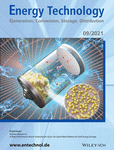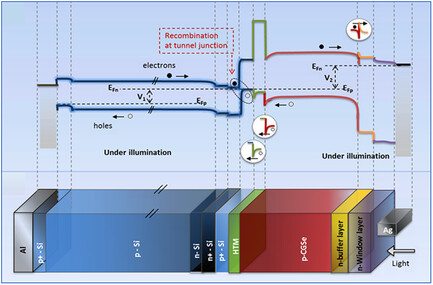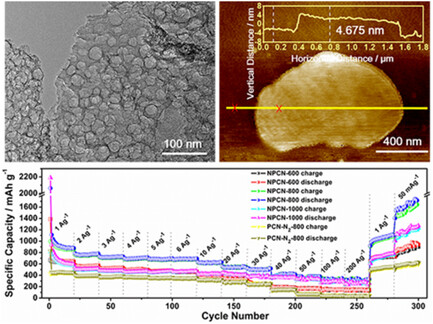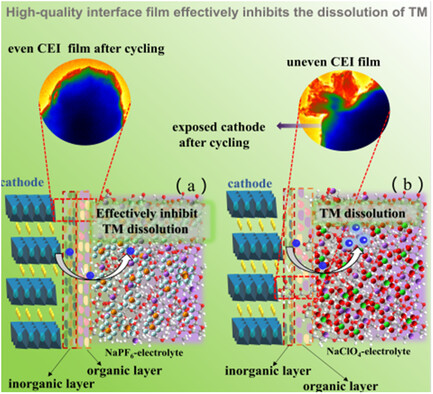Journal list menu
Export Citations
Download PDFs
Cover Picture
A High-Performance Room-Temperature Li||Ga–Sn Liquid Metal Battery for Grid Energy Storage
- First Published: 08 September 2021
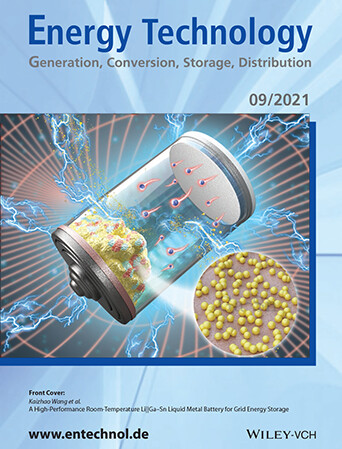
A room-temperature liquid metal battery with a solid lithium anode electrode and gallium–tin (Ga–Sn) alloy cathode electrode is reported. The Li‖Ga–Sn battery has fast reaction kinetics, a satisfactory specific capacity, high energy efficiency, good rate performance, and stable cyclic reversibility, which is a promising choice for power grid energy storage applications. More details can be found in article number 2100330, Jin Hu, Kaijun Wang, and co-workers.
Masthead
Correction
Prospective Life Cycle Assessment of a Model Magnesium Battery
- First Published: 22 July 2021
Reviews
Advanced Research Progress on High-Efficient Utilization of Pt Electrocatalysts in Fuel Cells
- First Published: 26 June 2021
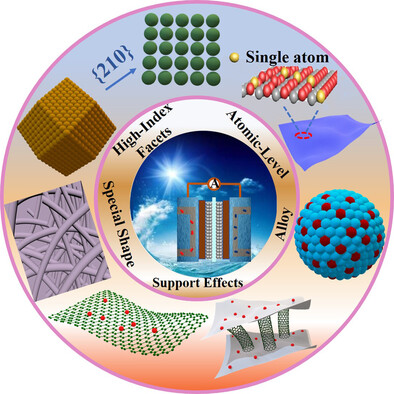
The recent progress of Pt-based precious metal catalysts in fuel cells, including the reasonable structural design and electrochemical reaction mechanism, is reviewed. The perspective of the future directions for high–efficient utilization of Pt in fuel cells is proposed, which is of great significance to the development of fuel cells.
Recent Progress in Al-, K-, and Zn-Ion Batteries: Experimental and Theoretical Viewpoints
- First Published: 29 June 2021
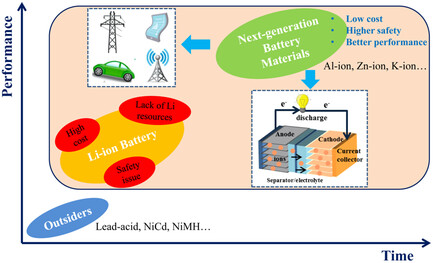
Herein, the recent advancements of next-generation battery materials post-Li-ion era from experimental and theoretical viewpoints are discussed. It contains an extensive discussion on advanced characteristics relevant to Al-, Zn-, and K-ion batteries, whereas the theoretical part sheds light on the current progress in the corresponding electrode materials.
The 2-Propanol Fuel Cell: A Review from the Perspective of a Hydrogen Energy Economy
- First Published: 30 June 2021
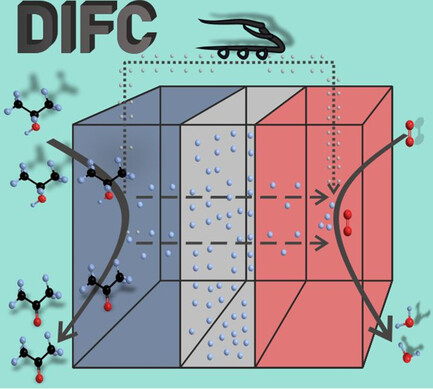
2-Propanol fuel cells (also known as direct isopropanol fuel cells or DIFCs) convert isopropanol to acetone with very high selectivity. This Review highlights the development and state-of-the-art of such devices. DIFCs may be well-suited to play an important role in a hydrogen energy economy if technical challenges regarding long-term operation can be solved.
A Comprehensive Perspective on the Fabrication of CuGaSe2/Si Tandem Solar Cells
- First Published: 22 July 2021
State-of-the-Art of the Synthesis and Applications of Sulfonated Carbon-Based Catalysts for Biodiesel Production: a Review
- First Published: 22 June 2021

This review reviews the research progress in the sulfonated carbon-based catalysts (SCC) development for biodiesel production. This review covers the objectives: 1) identify the types of SCC used, 2) discuss different preparation techniques, 3) compare the influences of sulfonating parameters, 4) discuss the physicochemical properties alternations after the sulfonation functionalization, and 5) summarize the previously reported SCC-catalyzed biodiesel production.
Recent Advances in Enhancing Oxygen Reduction Reaction Performance for Non-Noble-Metal Electrocatalysts Derived from Electrospinning
- First Published: 29 June 2021
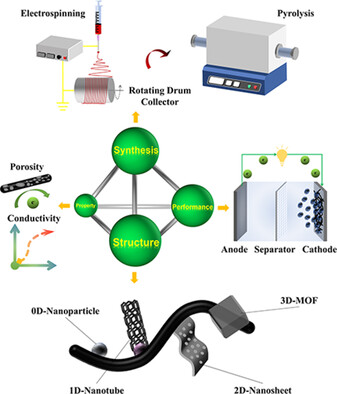
Carbon materials derived from electrospinning can be uniformly synthesized on a large scale to catalyze the oxygen reduction reaction (ORR). It opens an efficient way to take the place of noble electrocatalysts in cost reduction of new energy devices. Herein, the advances of applying electrospinning technology in ORR are introduced and the strategies to enhance the catalytic performance are discussed.
Research Articles
A High-Performance Room-Temperature Li||Ga–Sn Liquid Metal Battery for Grid Energy Storage
- First Published: 24 June 2021

A room-temperature liquid metal battery with a solid lithium anode electrode and gallium–tin (Ga–Sn) alloy cathode electrode is reported. The Li||Ga–Sn battery has fast reaction kinetics, a satisfactory specific capacity, high energy efficiency, good rate performance, and stable cyclic reversibility, which is a promising choice for power grid energy storage applications.
Parameter and State of Charge Estimation Simultaneously for Lithium-Ion Battery Based on Improved Open Circuit Voltage Estimation Method
- First Published: 30 June 2021
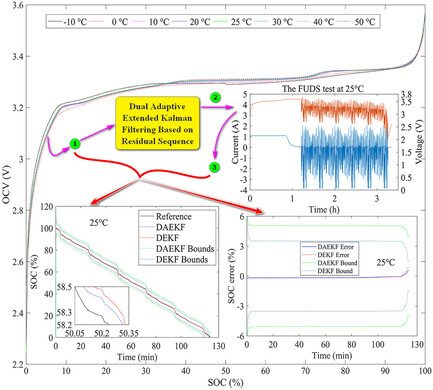
The low-temperature environment is not conducive to accurate open-circuit voltage (OCV) estimation. An improved OCV estimation method with temperature dependence suitable for essentially all test temperatures is proposed. On the strength of the improved OCV estimation method, double adaptive extend Kalman filter based on residual sequence is applied to predict the model parameters of lithium-ion battery and estimate SOC simultaneously.
Niobium Carbide as a Promising Pseudocapacitive Sodium-Ion Storage Anode
- First Published: 01 July 2021

Ball-milled NbC particles with 160–480 nm in size exhibit high capacity (242 mAh g−1 at 0.1 A g−1) and stable sodium-ion storage (126 mAh g−1 after 1000 cycles at a high current density of 5 A g−1). The adsorption mechanism and pseudocapacitive Na+ storage behavior account for the superior electrochemical performance.
Characterization of Aggregated Building Heating, Ventilation, and Air Conditioning Load as a Flexibility Service Using Gray-Box Modeling
- First Published: 18 June 2021
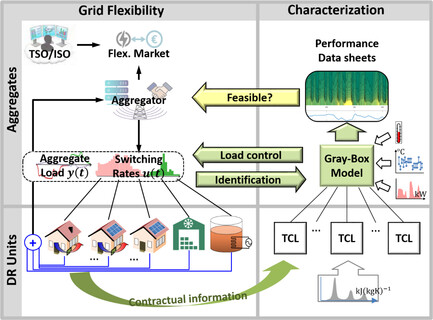
Ensembles of residential buildings equipped with heat pumps and thermal storage are flexible electricity consumers to balance unpredictable feed-in from renewable generation. Herein, new and fast probabilistic methods are derived to characterize the consumption profiles that will satisfy all technical and comfort constraints. These estimates require no detailed modeling of individual buildings. Their benefit for grid regulation tasks is demonstrated.
Design and Use of a Novel In Situ Simultaneous Thermal Analysis Cell for an Accurate “Real Time” Monitoring of the Heat and Weight Changes Occurring in Electrochemical Capacitors
- First Published: 26 June 2021
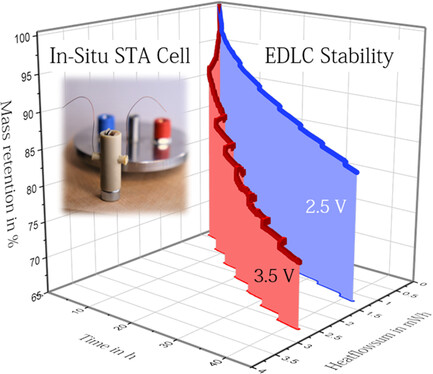
Herein, a novel in situ simultaneous thermal analysis (STA) cell is reported for the first time, which allows a precise monitoring of the variation of heat flow, mass loss, resistance, and capacitance occurring in electrochemical double layer capacitors (EDLCs) operating in conditions comparable to real applications.
Productivity Modeling Enhancement of a Solar Desalination Unit with Nanofluids Using Machine Learning Algorithms Integrated with Bayesian Optimization
- First Published: 01 July 2021
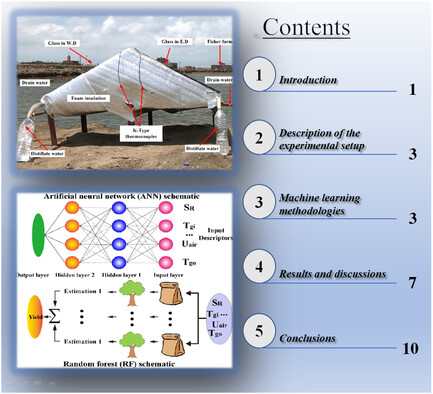
The article presents a machine learning-based prediction of double-slope solar still provided with nanofluid. Four different models are compared, namely, artificial neural network, random forest, support vector regression, and linear support vector regression. All models are optimized via Bayesian optimization algorithm. All proposed models can accurately predict the freshwater productivity with high determination coefficients up to 99.7%.
Device Optimization and Large-Scale Roll-to-Roll Manufacturability of Flexible Thin-Film Thermoelectric Generators
- First Published: 06 July 2021
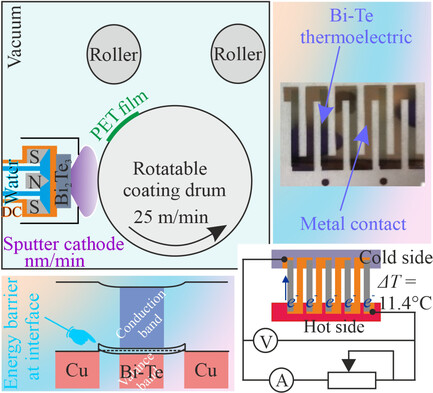
Herein, a flexible thin-film thermoelectric generator (TEG) in aspects of the metal contact (the metal−semiconductor interface), the in-line connection (in series or parallel), and the dimension of the thermoelectric strip (length and width) is optimized. Large-scale roll-to-roll manufacture of flexible TEGs is also explored using an industrially feasible approach: sputtering, inkjet printing, and laser cutting.
Deep Reinforcement Learning Guided Cascade Control for Air Supply of Polymer Exchange Membrane Fuel Cell
- First Published: 18 July 2021
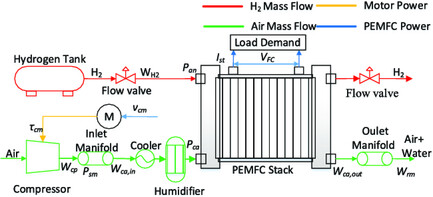
A deep deterministic policy gradient guided model predictive control–fuzzy PI cascaded controller for oxygen excess ratio regulation of a 75 kW fuel cell system is formulated and numerically verified. The optimality, robustness, antiuncertainty, and generalization ability of the proposed control algorithm are elaborated and exhibited in comparison to various controllers.
PdAg Nanoparticles Supported on Bipyridine-Based Porous Organic Polymers: An Effective Bimetallic Catalyst for the Hydrodeoxygenation of Vanillin
- First Published: 02 July 2021
Nitrogen-Doped Porous Carbon Nanosheets with Ultrahigh Capacity and Quasicapacitive Energy Storage Performance for Lithium and Sodium Storage Applications
- First Published: 06 July 2021
Gravure-Printed Conversion/Alloying Anodes for Lithium-Ion Batteries
- First Published: 30 June 2021
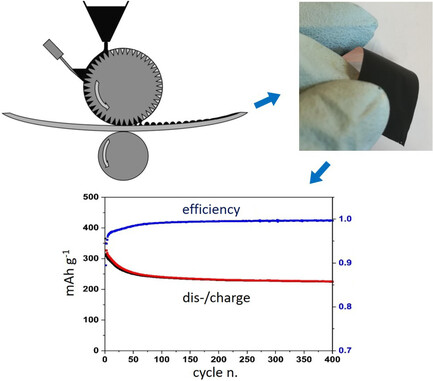
The widely used industrial gravure printing technique is successfully used to prepare anodes for custom-designed Li-ion batteries based on high-performance conversion/alloying materials. The high quality of the printed layers gives very good performance in terms of efficiency and long-term cycling stability. The multilayering does not affect the properties, allowing reaching the desired mass loading.
Enhanced Cyclic Stability of Sulfur Electrode by a Li-Nafion-Supported Encapsulated Configuration
- First Published: 01 July 2021
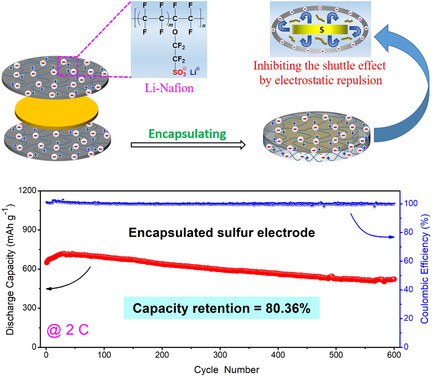
A Li-Nafion-supported sealing configuration is fabricated to encapsulate the pristine sulfur electrode to confine the polysulfides shuttle effectively. The dense surface of the configuration can physically obstruct the diffusion of soluble polysulfides. Meanwhile, the SO3− groups fixed on the Li-Nafion backbone provide a robust electrostatic repulsion to prevent the negatively charged polysulfides from migrating into the electrolyte.
Optimized Integration of Hybrid Renewable Sources with Long-Life Battery Energy Storage in Microgrids for Peak Power Shaving and Demand Side Management under Different Tariff Scenario
- First Published: 07 July 2021

Herein, an optimized scheduling of hybrid renewable energy (RE) sources, VRFB storage, and distribution grid is demonstrated to satisfy local load demand management. The cost of energy management is also optimized based on the power shared by multiple RE sources, grid tariff profile throughout the day, and operating cost of the energy sources and storage system.
A Novel Dopamine-Based Boronate Esters with the Organic Base as Highly Efficient, Stable, and Green Catalysts for the Conversion of CO2 with Epoxides to Cyclic Carbonates
- First Published: 13 July 2021
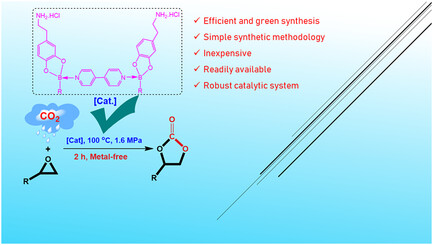
The novel boronate esters are synthesized and characterized by melting point, elemental analysis, NMR spectroscopy, FT-IR spectroscopy, UV–vis spectroscopy, and LC–MS/MS spectrometry. The comparison of different types of boron catalysts for reactions in CO2 fixation is presented. A conversion of 96.3% is observed using boronate ester catalyst and also the different catalytic parameters are investigated in this study.
Selection of Sodium Salt Electrolyte Compatible with Na0.67Ni0.15Fe0.2Mn0.65O2 Cathode for Sodium-Ion Batteries
- First Published: 01 July 2021
Thermal Control for Electric Vehicle Based on the Multistack Fuel Cells
- First Published: 26 July 2021
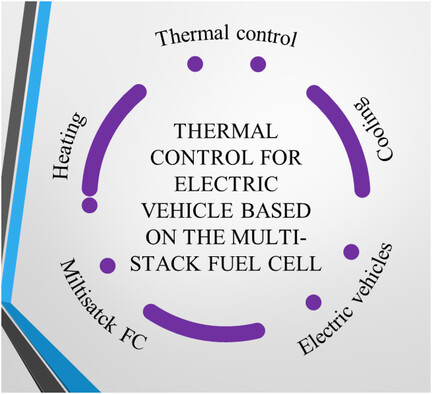
Herein, a strategy is proposed and tested in MATLAB/Simulink. This strategy based on multistack fuel cells (FCs) aims to: First, increase the temperature in the FC to the ideal operating range to use it efficiently. Second, keep the FC temperature within the ideal temperature range during operation.
Cobalt Nanoparticles Encapsulated in Hollow Carbon Nitride Nanotubes for Efficient Photocatalytic Hydrogen Evolution
- First Published: 08 July 2021
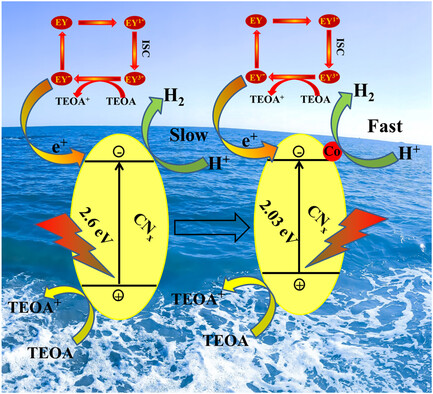
A new calcination method is used to encapsulate cobalt nanoparticles in hollow carbon nitride nanotubes, enabling a strong bond between the single catalytic materials and improves the stability of the composite catalyst. Due to the introduction of cobalt metal, a Schottky junction heterojunction is constructed, accelerating the charge transfer to achieve efficient hydrogen evolution.
Improvement of Photoelectrocatalytic Activity and Stability of WO3 for Oxygen Photoevolution Reaction by Loading of Brownmillerite-Type Ca2FeCoO5 as a Cocatalyst
- First Published: 30 July 2021
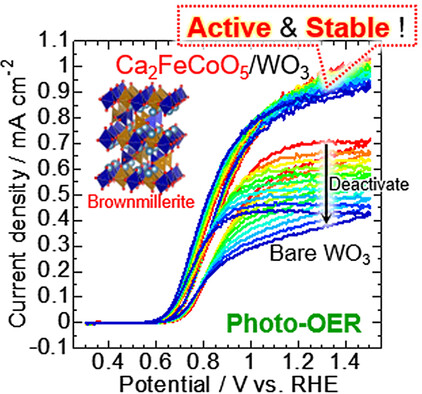
Brownmillerite-type Ca2FeCoO5 is loaded on WO3 as a cocatalyst for the oxygen photoevolution reaction. The photocatalytic activity and stability of WO3 are improved by Ca2FeCoO5 loading. Because both the lower edge of the conduction band and the upper edge of the valence band of Ca2FeCoO5 are higher than those of WO3, holes photoexcited at WO3 easily move to Ca2FeCoO5 and oxidize water.
Novel Aqueous Zinc–Halogenate Flow Batteries as an Offspring of Zinc–Air Fuel Cells for Use in Oxygen-Deficient Environment
- First Published: 22 July 2021
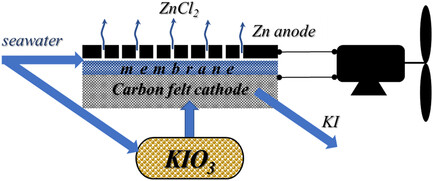
A novel zinc/halogenate flow battery is proposed as a reserve or emergency power unit. The batteries can be used to provide power to small underwater vehicles or marine-research devices. The battery uses a mechanically rechargeable zinc anode, neutral aqueous salt electrolyte, cation-exchange membrane, and a carbonaceous flow through cathode, at which aqueous halogenate is reduced to halide in a six-electron process.
Embroidering a Light and Foldable Photovoltaic Gauze Kerchiefs
- First Published: 22 July 2021
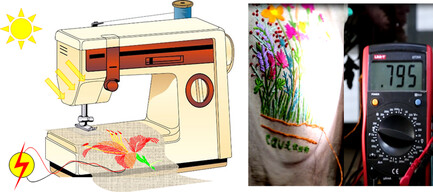
Learning from traditional textile industry, fiber-shaped photoanodes and counter electrodes are directly and reliably assembled to form photovoltaic textile on gauze kerchief through couching embroidery strategy. In addition to a light-weight and colorful pattern, the photovoltaic textile can also be stretchable, waterproof, and breathable, which will promote the commercial application of energy fabrics.
Rich Oxygen-Containing Carbon Microparticles Derived from Self-Assembled Polyimides for High-Performance Supercapacitors
- First Published: 08 July 2021
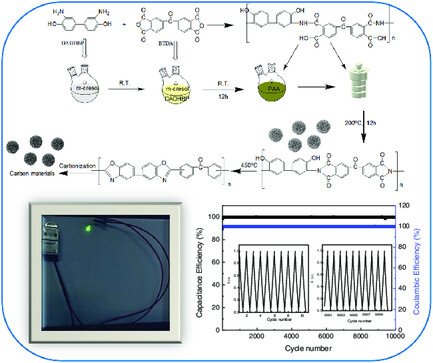
Novel porous carbon microparticles derived from self-assembled polyimides are prepared via a facile solvothermal strategy, followed by thermally rearranged treatment and pyrolysis. Without activation, carbon microparticles derived from 3,3′,4,4′-benzophenonetetracarboxylic dianhydride and 3,3′-diamino-4,4′-dihydroxybiphenyl exhibit large specific surface areas and abundant oxygen and nitrogen contents. These microparticles show excellent electrochemical performance to meet the requirements of energy storage and conversion.
Effects of Acidic Deep Eutectic Solvent Pretreatment on Sugarcane Bagasse for Efficient 5-Hydroxymethylfurfural Production
- First Published: 22 July 2021
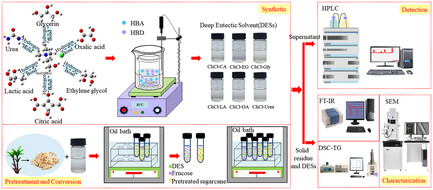
Seven kinds of deep eutectic solvents (DESs) are prepared and used for pretreatment and transformation of sugarcane bagasse (SCB). The synthetic DESs are characterized by a series of analyses. The results show that the DESs can deconstruct the SCB structure by removing lignin so that 5-HMF can be effectively obtained from SCB after pretreatment with a DES.
Oxygen-Rich Porous Activated Carbon from Eucalyptus Wood as an Efficient Supercapacitor Electrode
- First Published: 26 July 2021
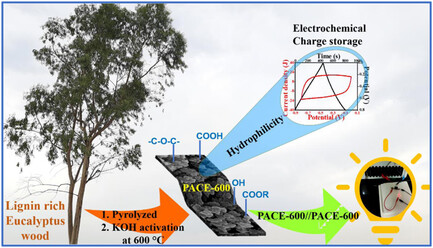
Oxygen functionalized porous activated carbon derived from lignin rich eucalyptus wood (PACE-600) is developed as electrode materials for efficient electrochemical charge storage. Its specific capacitance is 230 F g−1 and is stable for 10 000 charging–discharging cycles. The power density and energy density of the fabricated symmetric PACE-600//PACE-600 supercapacitor is 2396 W kg−1 and 41 W h kg−1, respectively.




